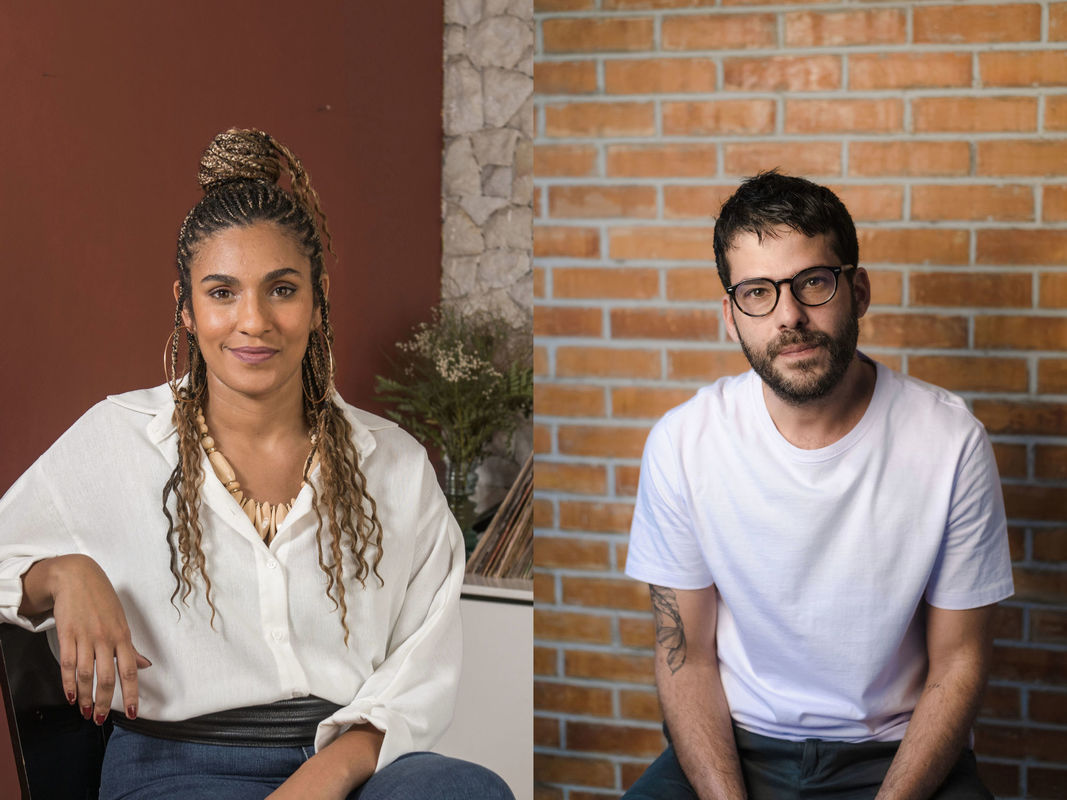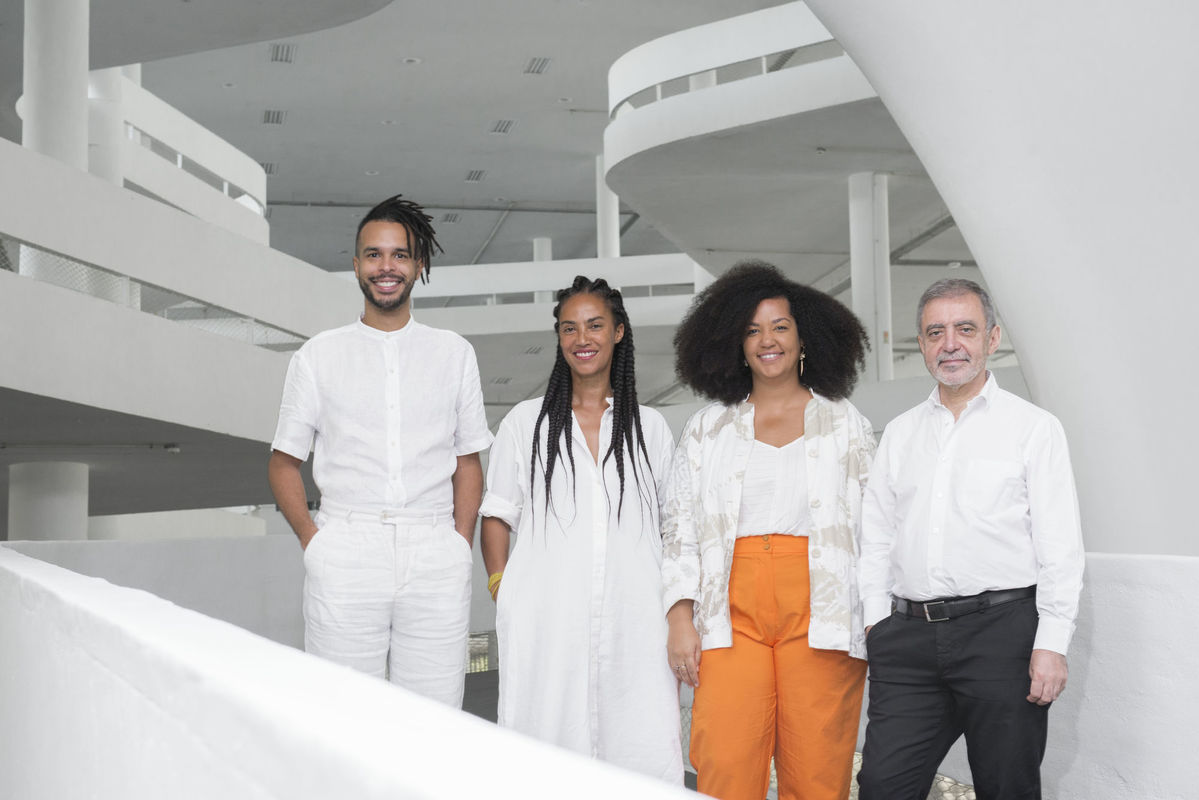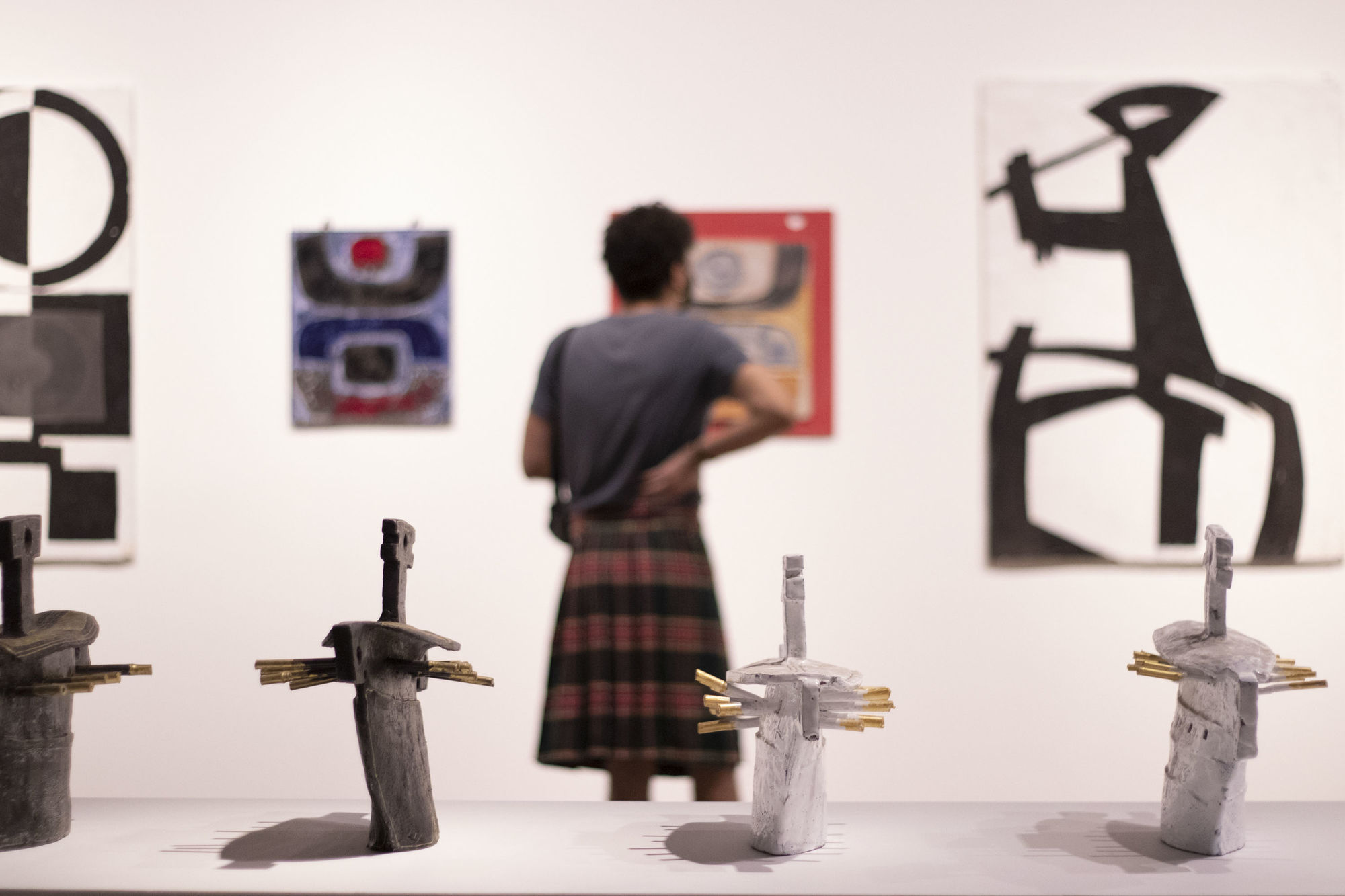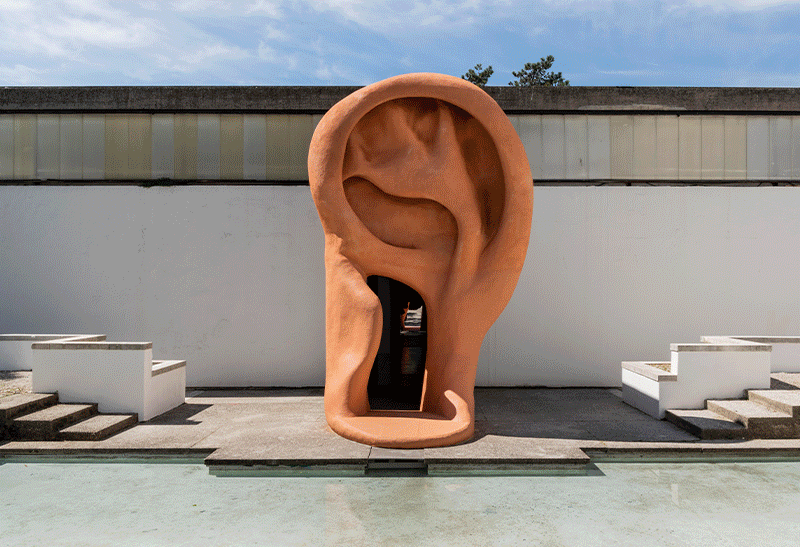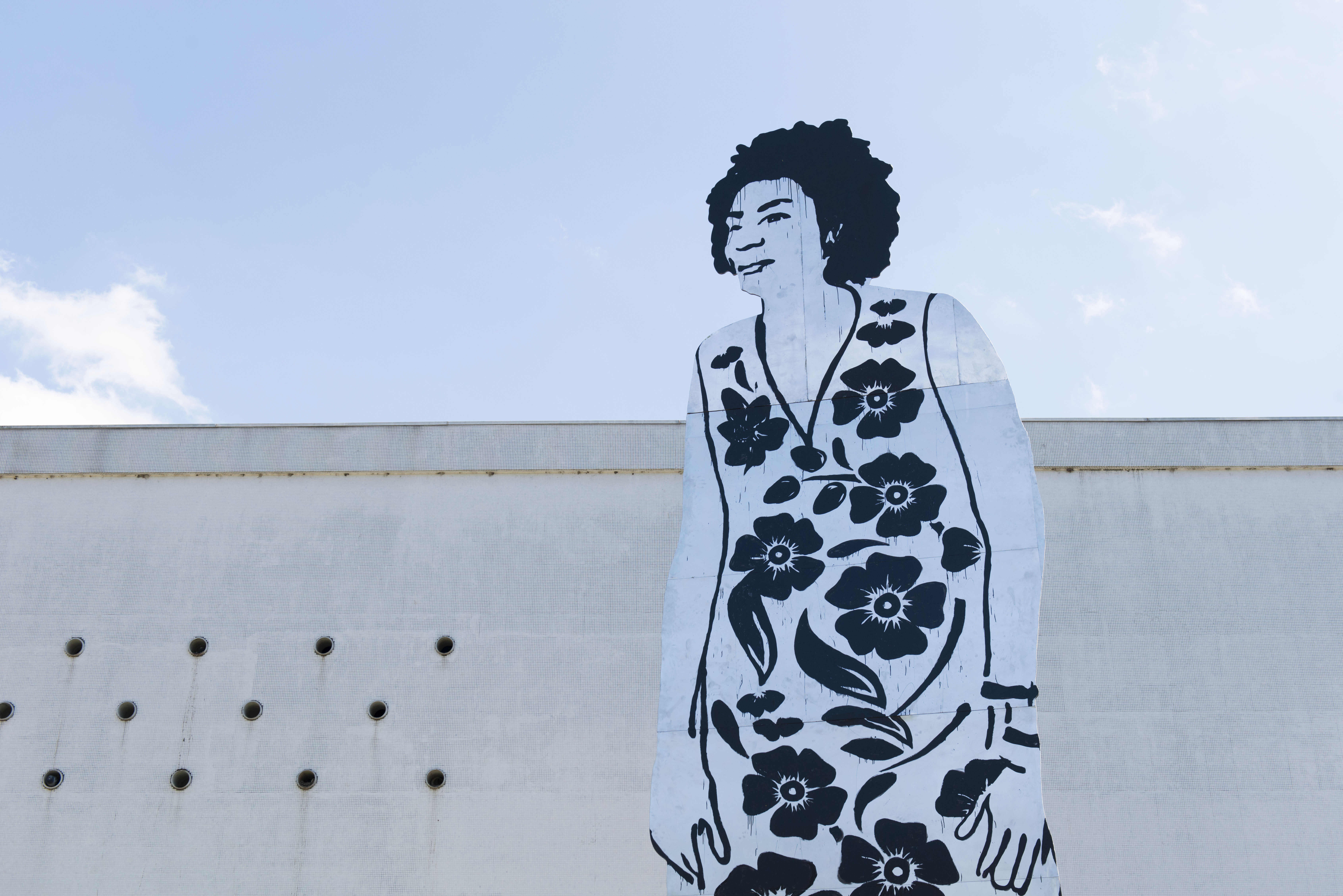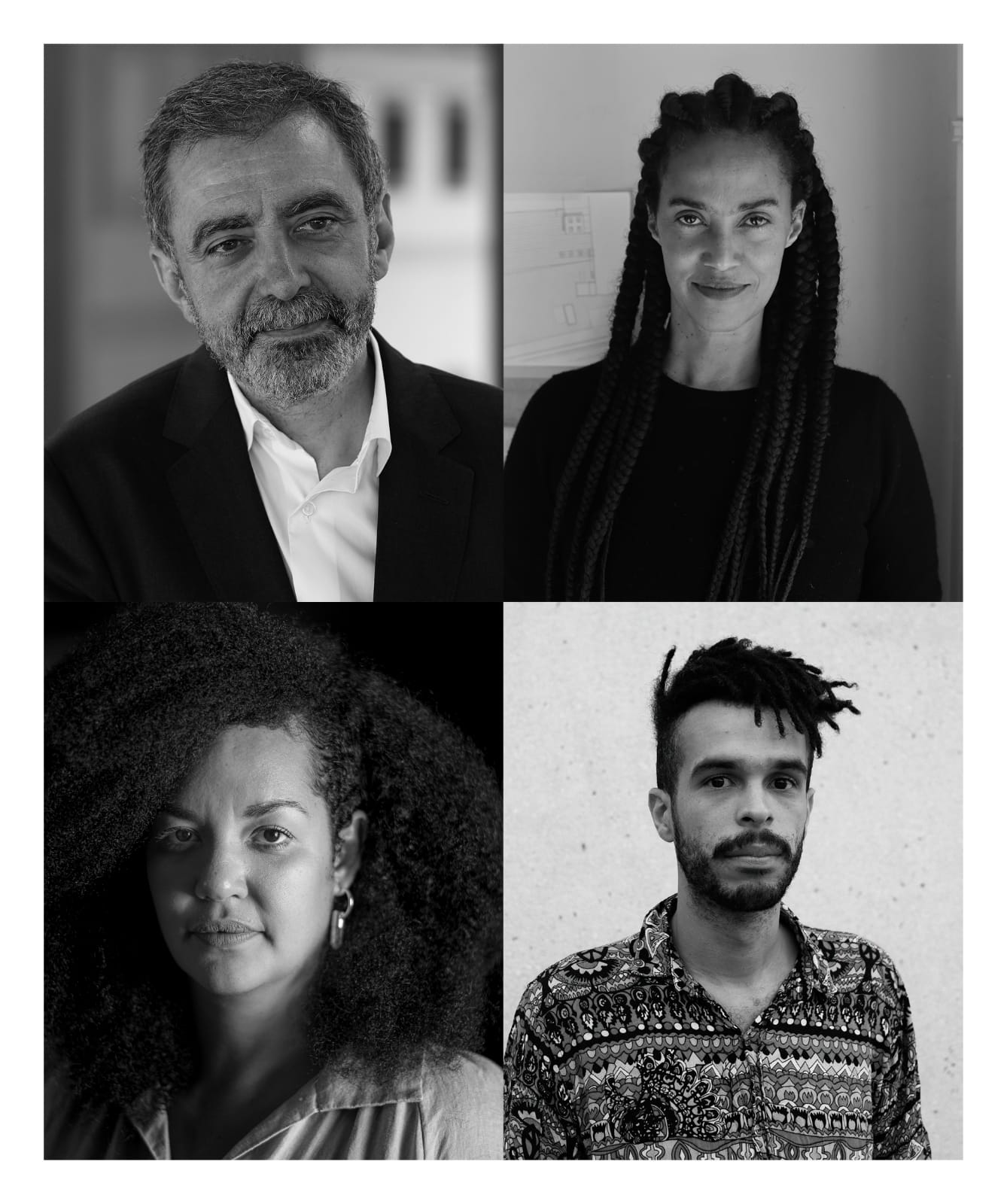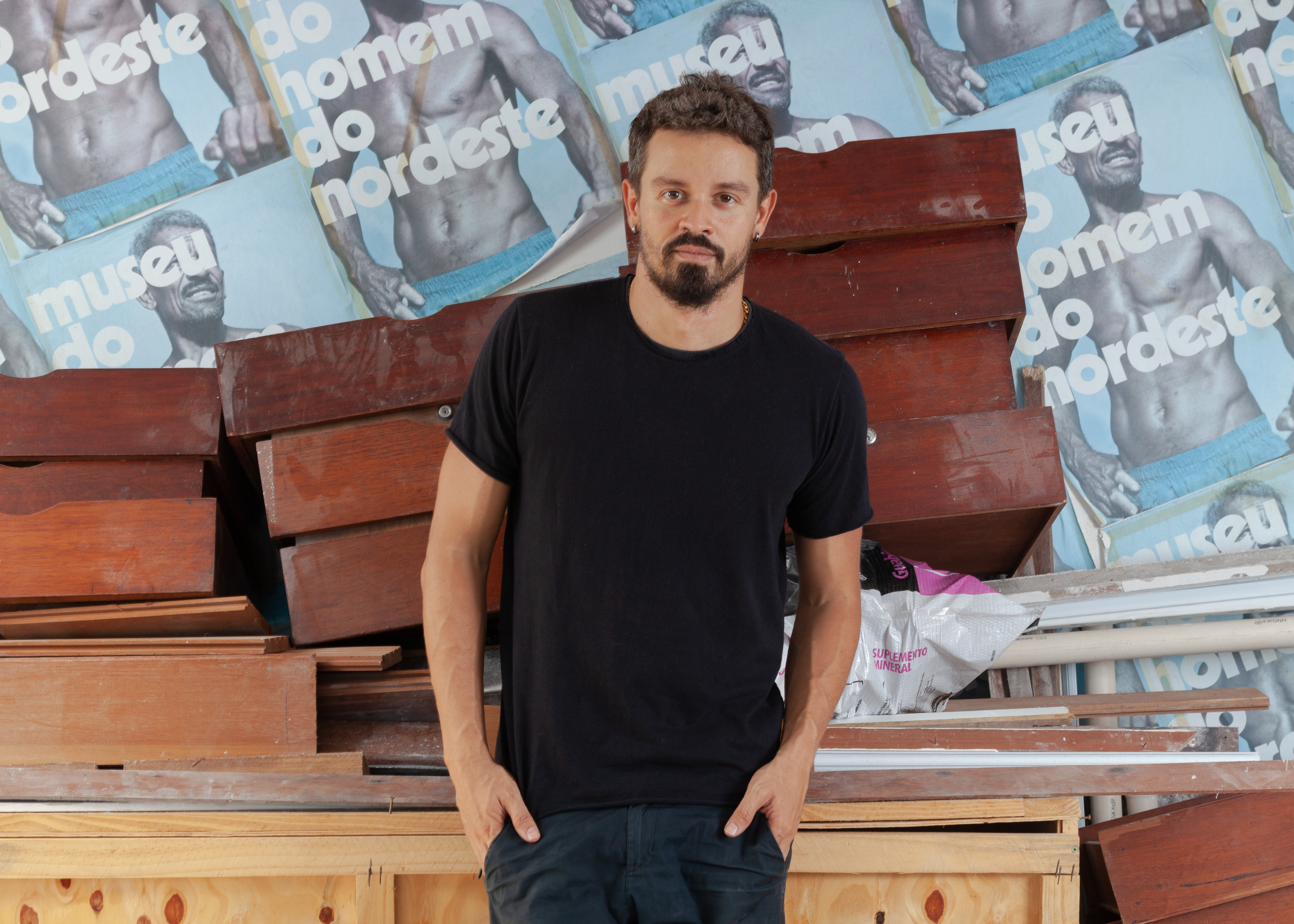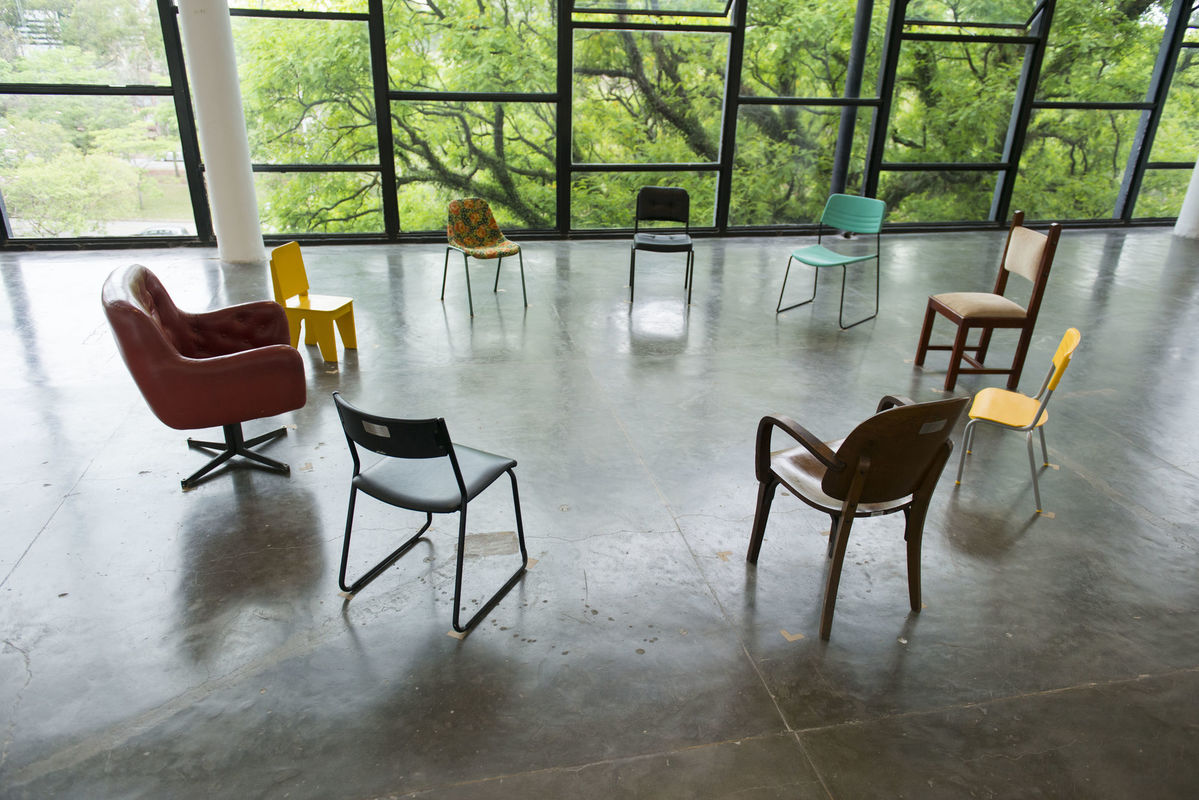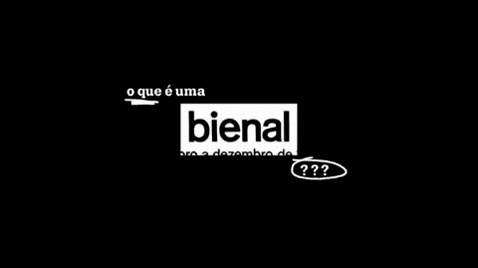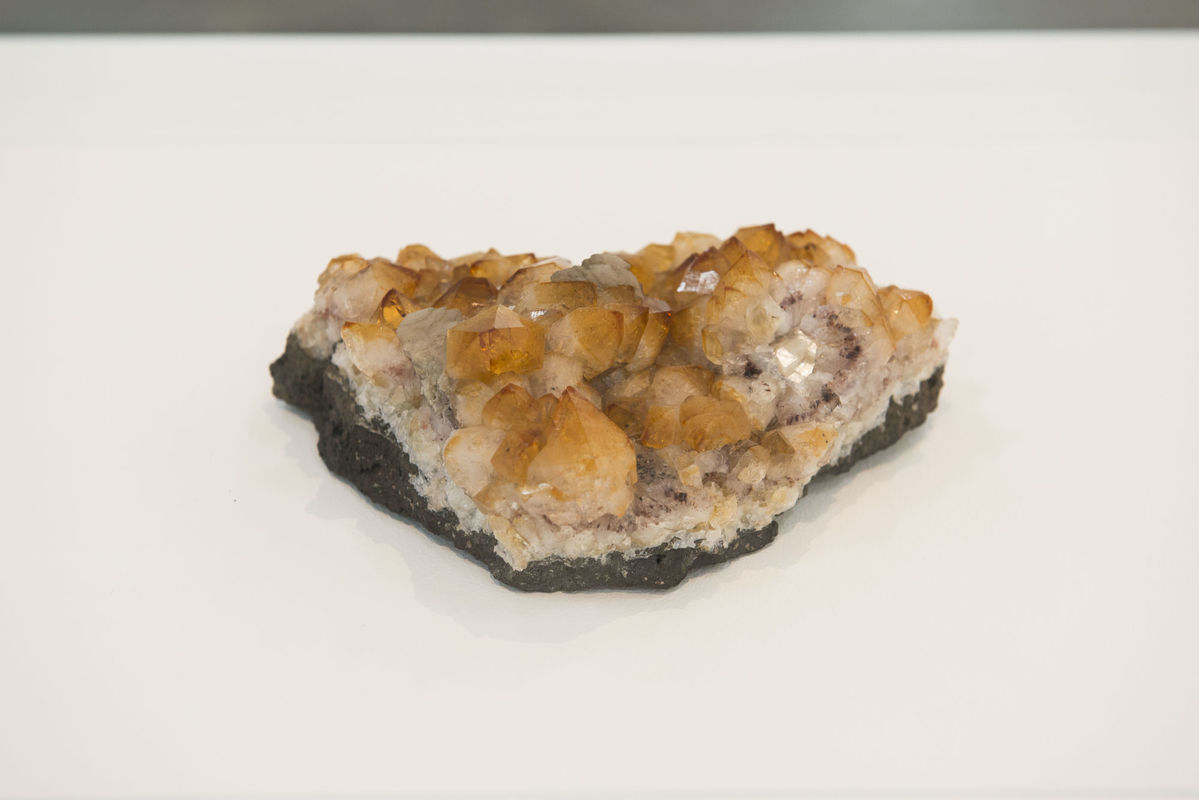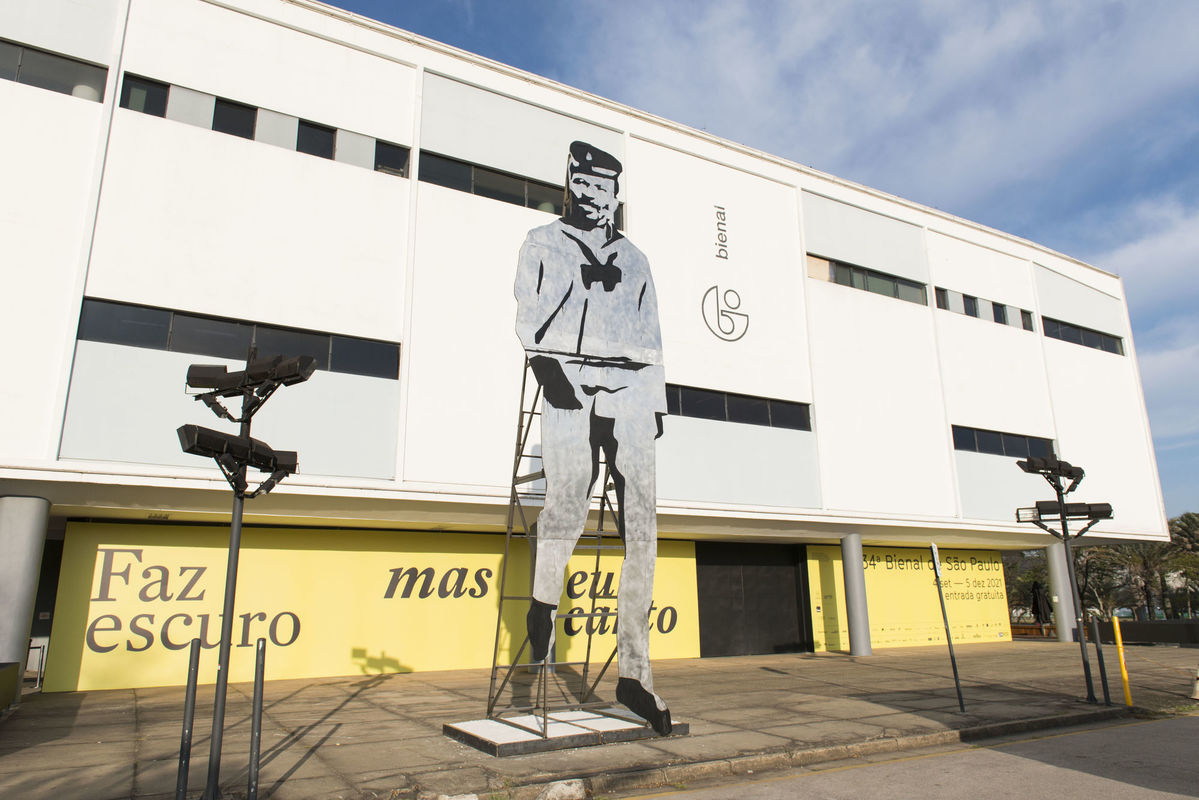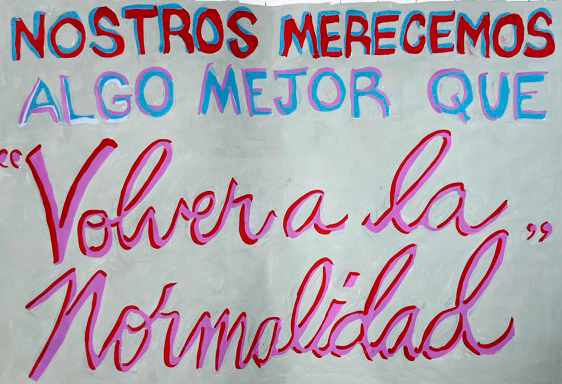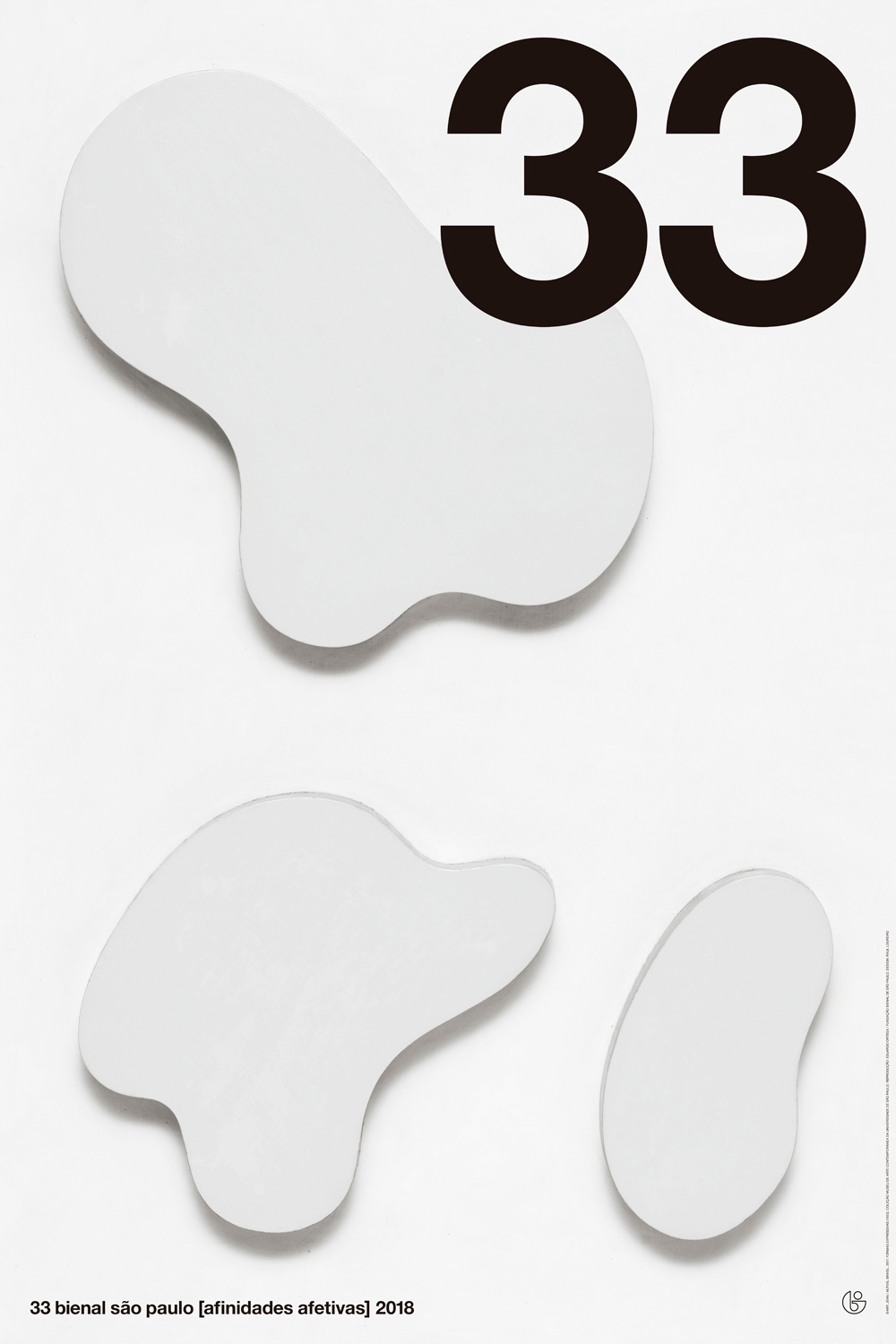
From September 7 to December 9, 2018, the 33rd Bienal de São Paulo – Affective Affinities aims to encourage each spectator’s individual appreciation of art by avoiding an overarching theme that could prompt pre-established understandings. The title selected by curator Gabriel Pérez-Barreiro — who was appointed by Fundação Bienal de São Paulo to conceive the show — resonates with Johann Wolfgang von Goethe’s novel Elective Affinities (1809), as well as Mário Pedrosa’s thesis ‘On the Affective Nature of Form in the Work of Art’ (1949).
However, the title is not intended to provide the exhibition with a thematic direction. Instead, it reflects the show’s organization, which draws on artistic and cultural links and affinities between participating artists. Like in Pedrosa’s text, it proposes an investigation into the ways that art creates an environment of relationships and communication, which begins with the artist and moves through the object to the viewer. Presence, attention and the way that the environment influences our experience, are the premises that guide the curatorial proposal, which functions as a response to a world of ready-made truths, in which the fragmentation of information and inability to focus attention can lead to alienation and passivity.
The curator believes in the positive impact of a radical change in the Bienal’s operating system. For this edition, alongside twelve solo projects selected by Peréz-Barreiro, seven artist-curators invited by him have defined their exhibition proposals. They have been working with full autonomy to choose participating artists and artworks. The only imposition is that they include their own work in their exhibitions.
Curatorial propositions designed by artist-curators
For her exhibition, Stargazer II, Mamma Andersson (Lulea, Sweden, 1962) brings together a group of artists that have been inspiring and fuelling her own production as a painter. The selection includes a wide range of references, such as 15th century Russian icons; the outsiders Henry Darger (USA, 1892 – 1973) and Dick Bengtsson (Sweden, 1936 – 1989); and contemporary artists, such as filmmaker Guvnor Nelson (Sweden, 1931) and fighter pilot and sound artist Åke Hodell (Sweden, 1919 – 2000). The participants share a common interest in expressive figuration and the human body. ‘I am interested in artists who work with melancholia and introspection as a way of life and as a survival strategy’, explains Andersson. The exhibition also includes a large number of Andersson’s paintings, presenting a vibrant dialogue between her practice and her artistic inspiration.
Antonio Ballester Moreno (Madrid, Spain, 1977) approaches his curatorial project for the 33rd Bienal de São Paulo as a way of contextualising a universe based in the close relationship between biology and culture, with references to the history of abstraction and its interplay with nature, pedagogy and spirituality. For this purpose, he brings together the work of philosophers, scientists and artists: ‘we are all creators of our own world, but I understand that such a variety of languages have separated us from a sense of the common, so this proposal focuses on the study of our origins, whether in relation to natural, social or subjective aspects — the three axis that organise the exhibition’, explains the artist. Titled sentido/comum [common/sense], the exhibition encompasses educational toys from historical avant-gardes, artworks from Escuela de Vallecas and works by contemporary artists. Amongst the participants, the exhibition features the philosopher and educator Friedrich Fröbel (Germany, 1782 – 1852); Andrea Büttner (Germany, 1972); Mark Dion (USA, 1961) and Rafael Sánchez-Mateos Paniagua (Spain, 1979), who also contributed to the educational publication Convite à atenção [Invitation to Attention].
Sofia Borges’ (Ribeirão Preto, Brazil, 1984) curatorial project, titled A infinita história das coisas ou o fim da tragédia do um [The Infinite History of Things or the End of the Tragedy of One], explores a collage of mythological references based on philosophical interpretations of Greek tragedy. Her proposal is to investigate the limits of representation and language’s inability to mediate the real. ‘I have spent years attempting to use images to reveal the state of the representation of things, until I understood there is no solution to this because, in fact, it is a question of meaning. Language is tragic per se, as it is ambiguous. One material cannot be used to talk about another’, the artist explains. The exhibition project draws on a mixed curatorial model in which the selection of specific artworks is accompanied by commissioned works. One of the singularities of Borges’ proposal — which includes works by Jennifer Tee (Netherlands, 1973), Leda Catunda (Brazil, 1961), Sarah Lucas (UK, 1962) and Tal Isaac Hadad (France, 1976), amongst others — is its activation within a programme of experimentations that take place throughout the Bienal’s duration.
Waltercio Caldas (Rio de Janeiro, Brazil, 1946) — whose production has always drawn on history of art — proposes the exhibition Os aparecimentos [The Appearances], where artworks from different artists are confronted with his own works. ‘Given that an artist’s practice deals with numerous issues that vary throughout time, I have chosen artworks that deviate from their most well-known aspects and that stand out for their quality and specificity. The outcomes from the relationships between the selected pieces became the main interest of my selecion’, explains the artist. Caldas proposes a reflection on poetics, as well as the nature of forms and ideas and their implication on the production of art since the late 19th century. ‘In looking at the tension between these very diverse artworks, I have searched for the illuminating surprises that surface from their friction’, he says. Challenging his own work and highlighting often-unexpected interactions — such as between the work of Victor Hugo (France, 1802-1885), Jorge Oteiza (Spain, 1908-2003) and Vicente do Rego Monteiro (Brazil, 1899-1970) — we see the emergence of new possibilities for reading art.
Drawing on his interests in issues such as repetition, narrative and translation, Alejandro Cesarco (Montevideo, Uruguay, 1975) realizes a curatorship of artworks from artists that share his conceptual and aesthetic concerns. Titled Aos nossos pais [To Our Parents], ‘the show questions how the past (history) simultaneously enables and frustrates potentialities, how we rewrite the past with our work, and how difference is produced in repetition’, Cesarco explains. As well as the artist-curator himself, the show presents artists from three different generations, including Sturtevant (USA, 1924 – France, 2014), Louise Lawler (USA, 1947) and Cameron Rowland (USA, 1988). ‘To dedicate the show to a primary relation (biological or adopted, literal or metaphorical) is a way of constructing a genealogy and trying to get close to the core source of our understandings, methods, inhibitions, possibilities, and expectations.’
For her exhibition titled O pássaro lento [The Slow Bird], Claudia Fontes (Buenos Aires, Argentina, 1964) draws on a metanarrative: a fictional book of the same title whose content is unknown, except for some fragments and a few material remains. Both Fontes and her invited artists present artworks that activate links between the visual arts, literature and translation, through experiences that propose an expanded temporality. ‘The experience of speed and slowness are political experiences rooted in the body. They both influence understandings of space, distance and possibility’, she states. In a horizontal and collaborative curatorial project, each participant — with the exception of Roderick Hietbrink (Netherlands, 1975) — produced commissioned works for the occasion: Ben Rivers (UK, 1972), Daniel Bozhkov (Bulgaria, 1959), Elba Bairon (Bolivia, 1947), Katrín Sigurdardóttir (Iceland/USA, 1967), Pablo Martín Ruiz (Argentina, 1964), Paola Sferco (Argentina, 1974), Sebastián Castagna (Argentina, 1965) and Žilvinas Landzbergas (Lithuania, 1979).
For her exhibition project titled sempre, nunca [always, never], composed exclusively of commissioned artworks, Wura-Natasha Ogunji (St. Louis, USA, 1970) invited artists Lhola Amira (South Africa, 1984), Mame-Diarra Niang (France, 1982), Nicole Vlado (USA, 1980), ruby onyinyechi amanze (Nigeria, 1982) and Youmna Chlala (Lebanon, 1974) to create — like herself — new artworks in a collaborative and horizontal curatorial project. The work of these six artists ‘range from the intimate (body, memory, gesture) to the epic (architecture, history, nation)’, explains Ogunji. ‘In an open and ongoing dialogue, our individual projects encompass different practices and languages, intersecting at ideas and questions crucial to experimentation, freedom and the creative process’. Each artist’s practice is impacted by their individual histories and by the complex relationship they have with their lands, nations and territories. ‘Their work subverts hegemonic narratives and embraces interruptions as necessary openings’, she adds.
Individual projects selected by Gabriel Pérez-Barreiro
Amongst the twelve solo projects selected by the curator, three of them are posthumous tributes: Aníbal López (Guatemala City, Guatemala, 1964-2014), Feliciano Centurión (San Ignacio, Paraguay, 1962 – Buenos Aires, Argentina, 1996) and Lucia Nogueira (Goiania, Brazil, 1950 – London, UK, 1998). ‘I wanted to show artists that were historical, but not necessarily famous, in other words,I didn't want these exhibition sections to simply reiterate names that we already knew. The artists honored are are little known in Latin America, despite being exponents of their generation. Therefore, bringing them to the Bienal is a way of rescuing them from disappearing from the history of art, and showing them to new generations,” says Pérez-Barreiro.
Aníbal López, aka A-1 53167 (his ID number), was one of the precursors of performance art in his country. His practice, which includes video, performance, live acts, and urban interventions, amongst other forms of expression, is strongly political and focused on disputes regarding national borders, indigenous cultures, military abuses and even the art market. Videos and photographs of ephemeral actions, conducted as a form of protest to the objectification and fetishizing of art, compose the exhibition.
The queer universe is sensitively explored by Feliciano Centurión, who left his home country Paraguay to settle in Argentina, where he became an exponent of the so-called generation ‘Rojas’ (the first artists to exhibit at the gallery of Centro Cultural Rector Ricardo Rojas, at Universidad de Buenos Aires), until he fell victim to AIDS-related complications, at 34 years of age. Centurión worked primarily with fabrics and embroideries, incorporating items such as handkerchiefs and crocheted pieces bought in street markets in Buenos Aires. Descended from a family of embroiderers, he appropriated craft as an artistic language to express elements of his personal history based on a family tradition common in Paraguayan culture.
Still relatively unknown in Brazil, Lucia Nogueira — an artist from the city of Goiania, in central Brazil — is an essential figure to understand British art of the period, and achieved international recognition in her short life. Her sculptures and installations, which are the focus of her solo show at the 33rd Bienal, subvert the utilitarianism of objects with subtle humour, both through their unexpected association of elements and the wordplays constantly present in their titles, which create an atmosphere of strangeness and poetry.
Completing Pérez-Barreiro’s selection, there are solo projects by nine artists, of which eight were specifically commissioned. Amongst the group, the only artist exhibiting a historical artwork is Siron Franco (Goiás Velho, Brazil, 1950), with his painting series Césio/Rua 57 [Caesium/Street 57]. With it, Franco eternalises the feeling of horror and isolation triggered by a radiation accident that took place in 1987, when a neighbourhood of Goiania called Bairro Popular was contaminated with Caesium 137. Born and bred in the neighbourhood, the artist — in counter flow to the local population — left the mainstream region of São Paulo and Rio de Janeiro shortly after the accident, returning to his birthplace for good. His records of this environmental catastrophe are a turning point in his career, when he leaves behind ironic themes to adopt the use of allegories with highly symbolic elements.
The development of artworks that do not fit a thematic framework is something that the eight artists whose new works have been commissioned have in common. “They are complex works that function individually and do not need an additional context for the viewer to relate to them’, explains Pérez-Barreiro.
Alejandro Corujeira (Buenos Aires, Argentina, 1961) has a light and fluid formal perception, which appears to want to capture the movement of nature. He is presenting sculptures and paintings at the exhibition. Denise Milan (São Paulo, Brazil, 1954) creates sculptures and installations with large stones and crystals. The 33rd Bienal will feature brand-new artworks in this format.
The everyday is the inspiration behind the artworks produced by Maria Laet (Rio de Janeiro, Brazil, 1982), who is exhibiting a new video, and by Vânia Mignone (Campinas, Brazil, 1967), who is showing new paintings. Nelson Felix (Rio de Janeiro, Brazil, 1954) — whose ‘formal work appears to materialize a planetary awareness’, as highlighted by Pérez-Barreiro — is bringing a new sculptural installation.
The practices of Bruno Moreschi (Maringá, Brazil, 1982) and Luiza Crosman (Rio de Janeiro, Brazil, 1987) are linked to the current of institutional critique and move away from traditional art mediums. ‘With these artists we will have, within the exhibition, a critical perspective on how art functions, is exhibited and explained’, asserts Pérez-Barreiro. Taking a personal and poetic approach, Tamar Guimarães (Viçosa, Brazil, 1967), who merges a critical institutional approach with poetic and narrative concerns, is presenting a new video.
33rd Bienal de São Paulo – Affective Affinities
from September 7 to December 9, 2018
tue, wed, fri, sun and holidays: 9am - 7pm (last entry 6pm)
thur, sat: 9am - 10pm (last entry 9pm)
Closed on mondays / Free admission
Ciccillo Matarazzo Pavilion, Ibirapuera Park
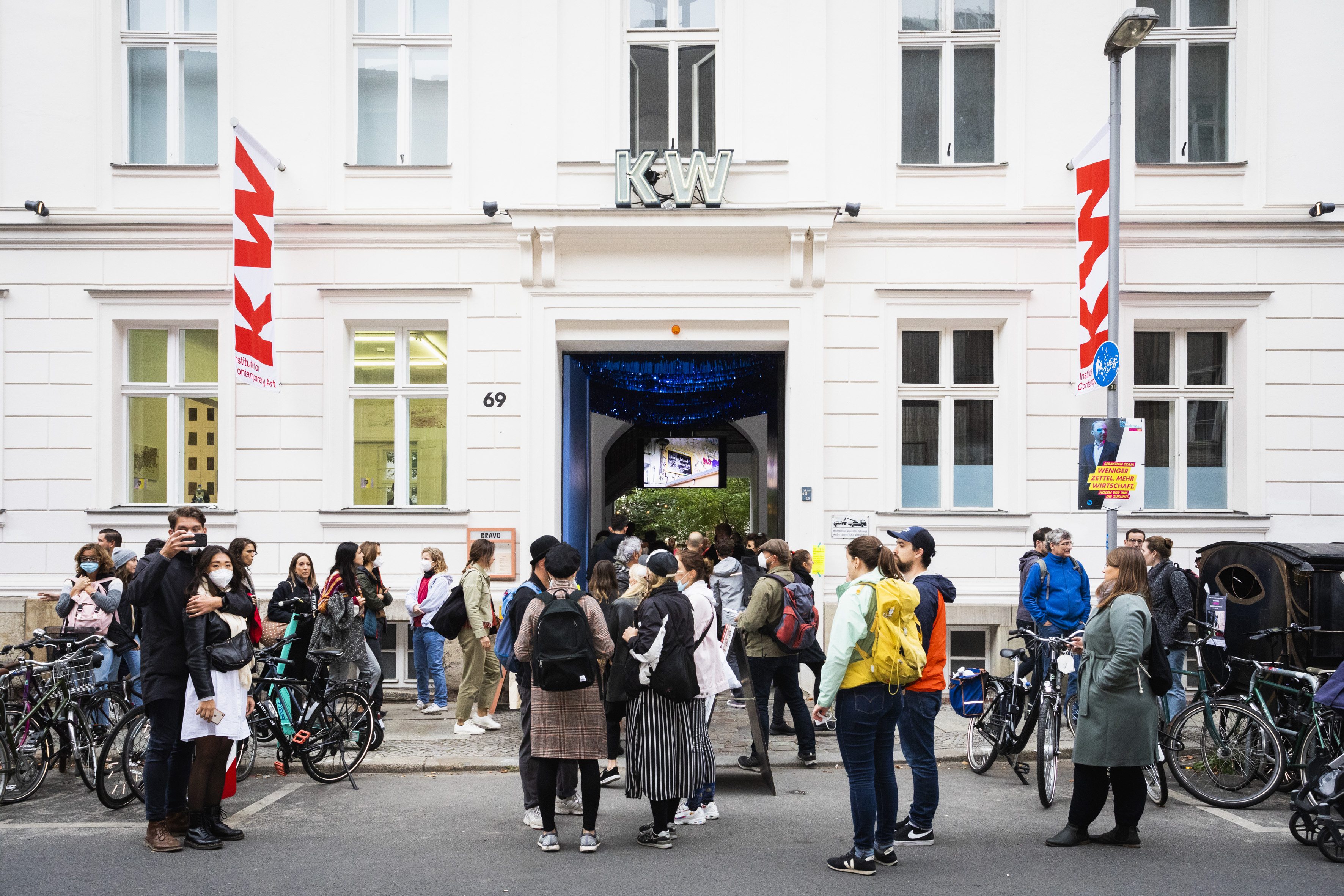

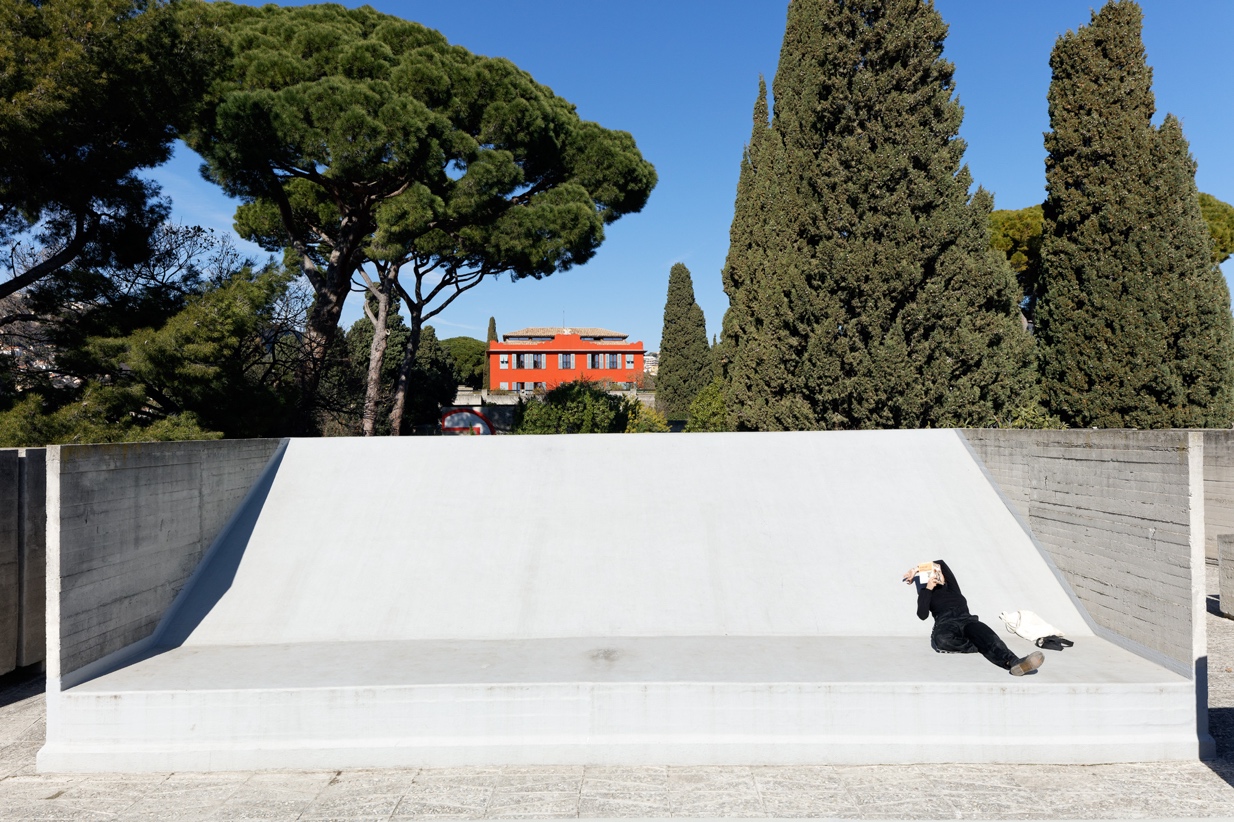
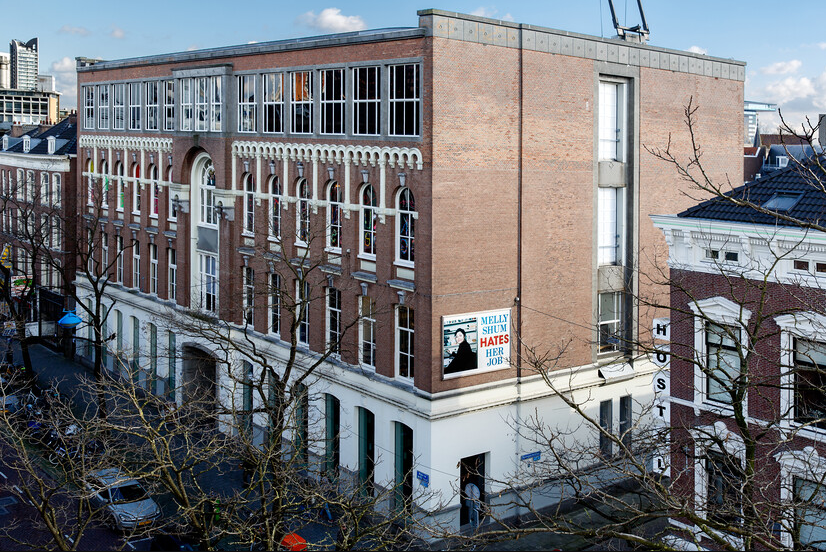

![View of the sculpture of the series Corte Seco [Dry cut] (2021), by Paulo Nazareth during the 34th Bienal de São Paulo. Commissioned by Fundação Bienal de São Paulo for the 34th Bienal de São Paulo](http://imgs.fbsp.org.br/files/81b3a05327e8559c64fc5cda09f3e1f8.jpg)
